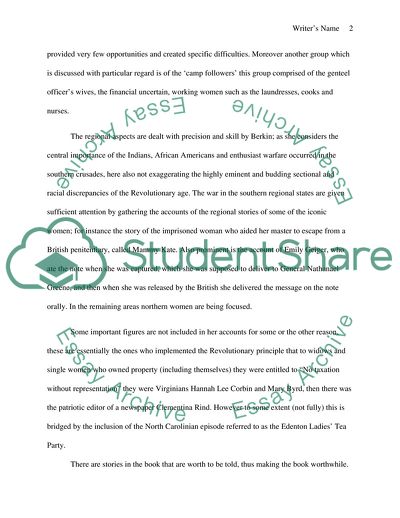Cite this document
(Revolutionary Mothers: Women in the Struggle for America's Book Report/Review, n.d.)
Revolutionary Mothers: Women in the Struggle for America's Book Report/Review. https://studentshare.org/sociology/1724979-revolutionary-mothers-women-in-the-struggle-for-americas-independence
Revolutionary Mothers: Women in the Struggle for America's Book Report/Review. https://studentshare.org/sociology/1724979-revolutionary-mothers-women-in-the-struggle-for-americas-independence
(Revolutionary Mothers: Women in the Struggle for America'S Book Report/Review)
Revolutionary Mothers: Women in the Struggle for America'S Book Report/Review. https://studentshare.org/sociology/1724979-revolutionary-mothers-women-in-the-struggle-for-americas-independence.
Revolutionary Mothers: Women in the Struggle for America'S Book Report/Review. https://studentshare.org/sociology/1724979-revolutionary-mothers-women-in-the-struggle-for-americas-independence.
“Revolutionary Mothers: Women in the Struggle for America'S Book Report/Review”. https://studentshare.org/sociology/1724979-revolutionary-mothers-women-in-the-struggle-for-americas-independence.


